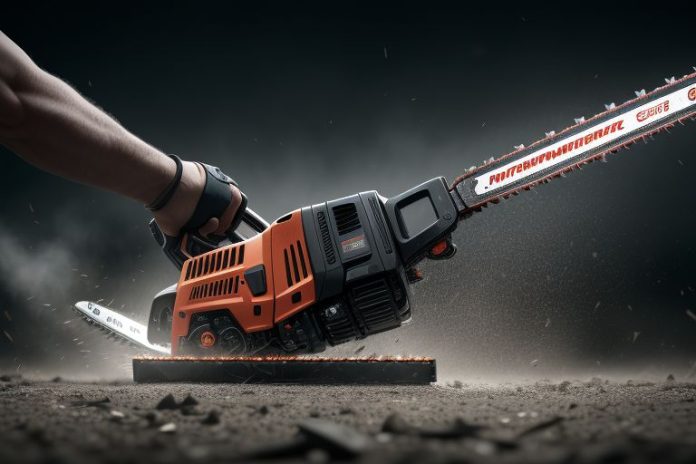Chainsaws, which are mostly known for their robustness, were used in the lumber and forestry business. It’s surprising, however, that the development of these tools and their roots are quite unexpected, contrary to what most people think. The book describes the amazing development of chainsaws, taking the reader from a medical instrument to an integral part of forestry machines.
The Medical Origins of Chainsaws
1The concept that chainsaws were invented to be used in cutting down trees seems to be incorrect. Initially, the idea was quite the opposite. The thoughts that first bombs in the world were a medical instrument of this kind are shocking today.
Symphysiotomy and Childbirth
The very first chainsaw-like device was a hand-held, hand-cranked contraption and it was developed by two Scottish doctors, John Aiken, and James Jeffray. It was originally used for a medical procedure called symphysiotomy, a process of cutting through the cartilage and ligaments of a woman’s pelvic joint to widen the birth canal during difficult childbirths.
The prototype was designed in the fashion of a manually operated one and, in fact, rather looked like a kitchen knife with a chain that had teeth and moved around a guiding blade. The main aim was to cut through the cartilage and ligaments in the symphysiotomy during difficult childbirth where the doctor used a small saw.
Transition to Forestry and Lumber Industries
And that once the lifesaving cesarean was made safer and easier, the chainsaws used in childbirth decreased. On the other hand, the tremendous potential of large-scale logging tools has not been unnoticed by other sectors.
Early Forestry Applications
In the olden days, the concept of the medical chainsaw was transferred to the forestry arena. The chainsaw was first patented for wood cutting by a man named Samuel J. Bens in 1905. He had invented an endless chain saw, which he wanted to use to fell giant redwoods.
Key Inventors and Their Contributions
Several inventors brought their vision to life to shape the chainsaw as we know it now. Here are some of their names:
- Mr. Andreas Stihl made an electric chainsaw for use in the woods and then he patented it in the year 1926.
- It was Mr. Joseph Buford Cox who made a chainsaw chain inspired by timber beetle larvae in 1946.
- They came up with the idea of the first chainsaw to be operated by one person only in 1948 (McCulloch Motors Corporation).
Technological Advancements in Chainsaw Design
Throughout the years, the chainsaws have progressed remarkably in different aspects:
- 1920s: The first experience with gas-powered chainsaws
- 1950s: The development of chainsaws from brass and metal to aluminum alloys
- 1960s: The invention of the antivibration system
- 1970s: The inclusion of the chain brakes for better safety
- 1980s-present: The continued additions of fuel saving, environmental friendliness you can think of it but improved efficiency, ergonomics, comfort etc. are forever the same.
Comparing Early and Modern Chainsaws
The ancient chainsaws were heavy and unwieldy and needed one more person to handle them. They are, on the other hand, light, portable, and can be operated by only one person. They are also have main safety elements and are designed for fuel efficiency, and fighting harmful emissions.
Common Misconceptions
One of the most widely held misconceptions about chainsaws concerns their initial use that of being primarily logging the trees. It’s quite clear that their early medical uses came before their use in forestry by almost a century.
Impact on Industries
Chainsaws have indeed made the most notable changes in different fields and those are:
- Forestry: It became more efficient in the plantation of trees and the cutting of the wood to make them into useful products.
- Construction: Wood turnover was raised due to quicker and more precise wood cutting.
- Emergency services: A crucial tool that was saved in the rescue operation is shown.
- Sculpture: An art that can talk and walk.
Conclusion
Fortunately, the use of chainsaws is not only limited to forestry, but it is now a tool that is welcomed in almost all industrial sectors. This remarkable changeover from a tooled-up medical device to one utilized across numerous fields is a reflection of human creativity, adaptability, and resourcefulness. The study of the history of the chainsaw would not just be a source of interesting data, but it could be a way of understanding the process to advanced technology and industry.



 Bitcoin
Bitcoin  Ethereum
Ethereum  Tether
Tether  XRP
XRP  Solana
Solana  USDC
USDC  TRON
TRON  Cardano
Cardano  Lido Staked Ether
Lido Staked Ether  Avalanche
Avalanche  Toncoin
Toncoin